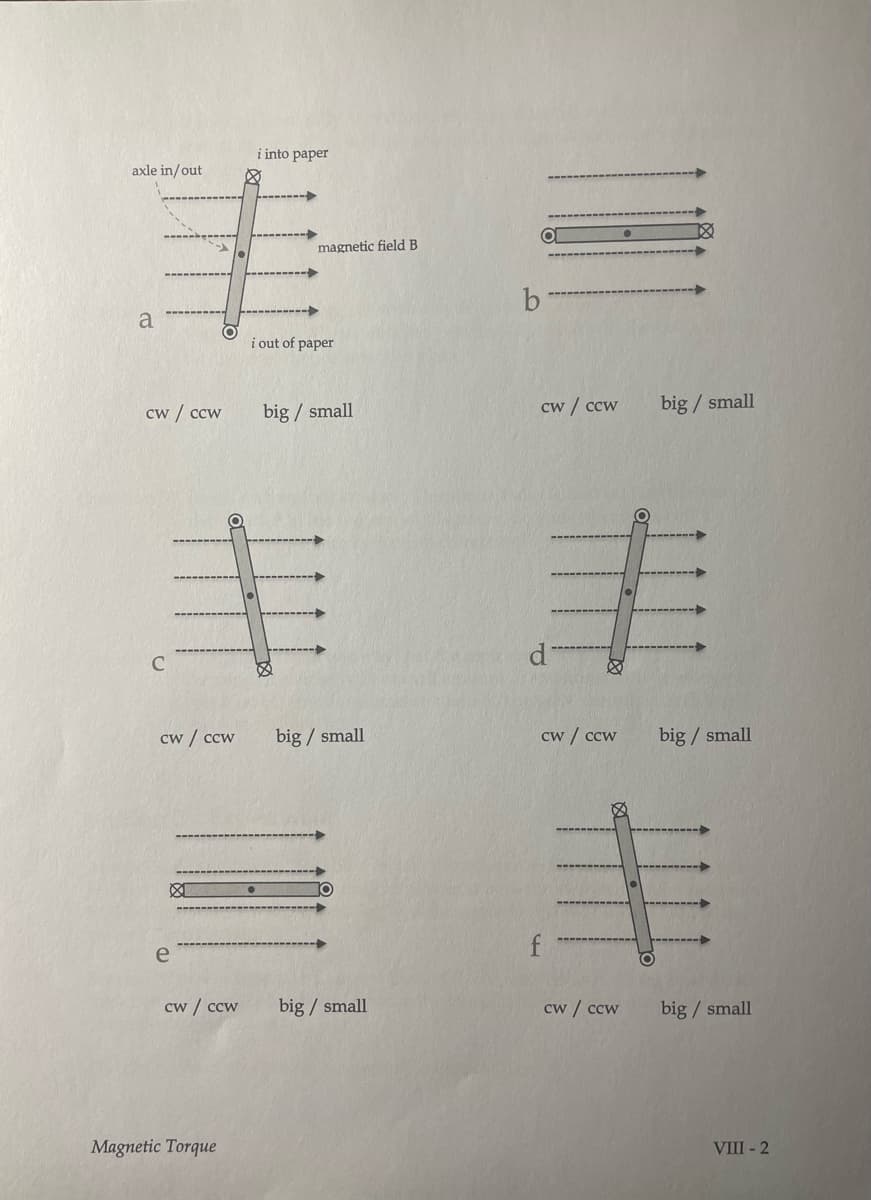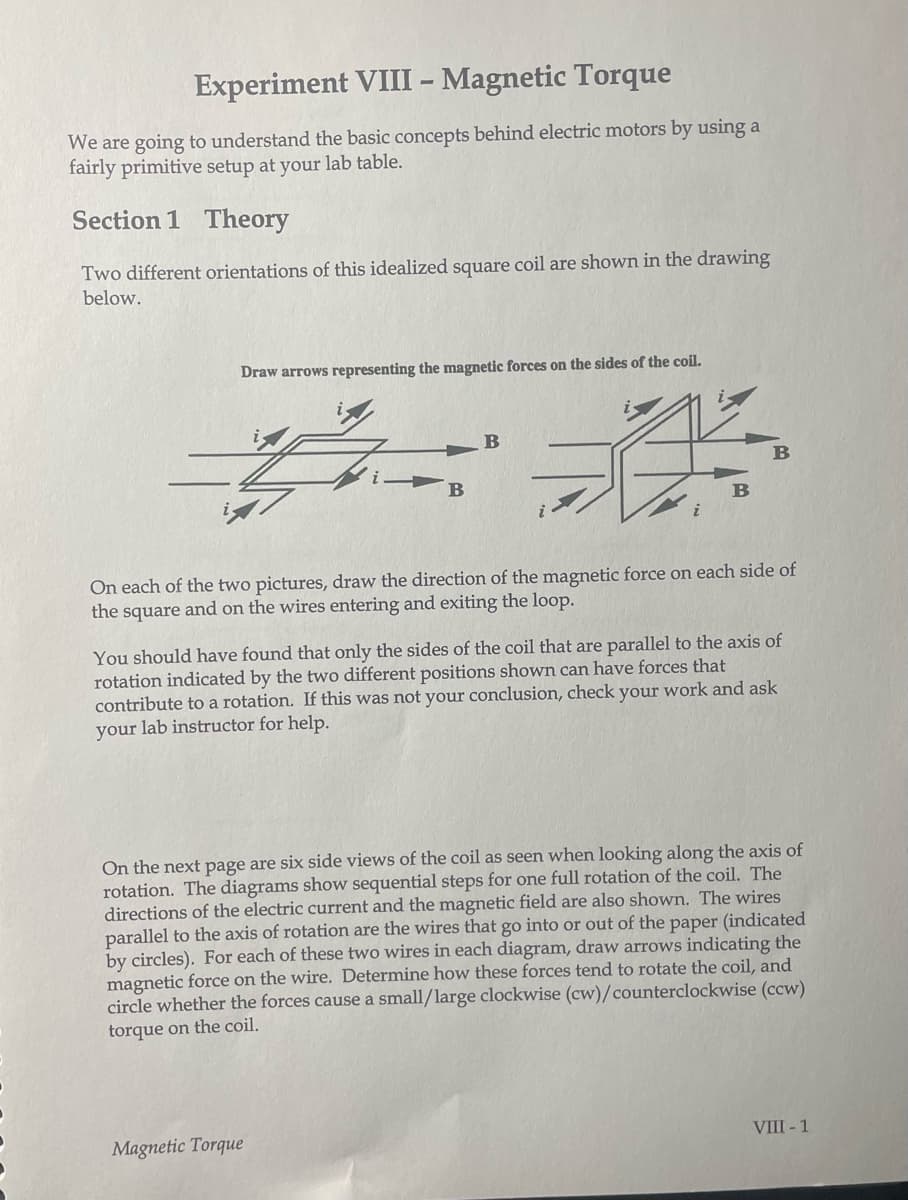i into paper axle in/out magnetic field B a i out of paper cw / ccw big / small cw / ccw big / small d' cw / ccw big / small cw / ccw big / small f e cw / ccw big / small cw / ccw big / small
i into paper axle in/out magnetic field B a i out of paper cw / ccw big / small cw / ccw big / small d' cw / ccw big / small cw / ccw big / small f e cw / ccw big / small cw / ccw big / small
Glencoe Physics: Principles and Problems, Student Edition
1st Edition
ISBN:9780078807213
Author:Paul W. Zitzewitz
Publisher:Paul W. Zitzewitz
Chapter24: Magnetic Fields
Section: Chapter Questions
Problem 98A
Related questions
Question
This is the complete question! How do I figure out if the rod goes clockwise or counterclockwise? Also, how do I know if the force on the coil is large or small?

Transcribed Image Text:i into paper
axle in/out
magnetic field B
a
i out of paper
cw / ccw
big / small
cw / ccw
big / small
d.
C
cw / ccw
big / small
cw / ccw
big / small
圭
e
cw / ccw
big / small
cw / ccw
big / small
Magnetic Torque
VIII - 2

Transcribed Image Text:Experiment VIII – Magnetic Torque
We are going to understand the basic concepts behind electric motors by using a
fairly primitive setup at your lab table.
Section 1 Theory
Two different orientations of this idealized square coil are shown in the drawing
below.
Draw arrows representing the magnetic forces on the sides of the coil.
B
B
On each of the two pictures, draw the direction of the magnetic force on each side of
the square and on the wires entering and exiting the loop.
You should have found that only the sides of the coil that are parallel to the axis of
rotation indicated by the two different positions shown can have forces that
contribute to a rotation. If this was not your conclusion, check your work and ask
your lab instructor for help.
On the next page are six side views of the coil as seen when looking along the axis of
rotation. The diagrams show sequential steps for one full rotation of the coil. The
directions of the electric current and the magnetic field are also shown. The wires
parallel to the axis of rotation are the wires that go into or out of the paper (indicated
by circles). For each of these two wires in each diagram, draw arrows indicating the
magnetic force on the wire. Determine how these forces tend to rotate the coil, and
circle whether the forces cause a small/large clockwise (cw)/counterclockwise (ccw)
torque on the coil.
VIII - 1
Magnetic Torque
Expert Solution
This question has been solved!
Explore an expertly crafted, step-by-step solution for a thorough understanding of key concepts.
Step by step
Solved in 3 steps

Knowledge Booster
Learn more about
Need a deep-dive on the concept behind this application? Look no further. Learn more about this topic, physics and related others by exploring similar questions and additional content below.Recommended textbooks for you

Glencoe Physics: Principles and Problems, Student…
Physics
ISBN:
9780078807213
Author:
Paul W. Zitzewitz
Publisher:
Glencoe/McGraw-Hill


Physics for Scientists and Engineers, Technology …
Physics
ISBN:
9781305116399
Author:
Raymond A. Serway, John W. Jewett
Publisher:
Cengage Learning

Glencoe Physics: Principles and Problems, Student…
Physics
ISBN:
9780078807213
Author:
Paul W. Zitzewitz
Publisher:
Glencoe/McGraw-Hill


Physics for Scientists and Engineers, Technology …
Physics
ISBN:
9781305116399
Author:
Raymond A. Serway, John W. Jewett
Publisher:
Cengage Learning

Physics for Scientists and Engineers: Foundations…
Physics
ISBN:
9781133939146
Author:
Katz, Debora M.
Publisher:
Cengage Learning